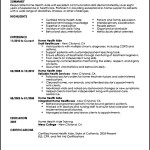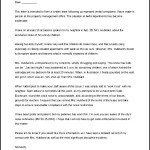Lesson Plan Template For Homeschool Parents
Homeschool Lesson Plan Template: A Guide for Parents
Homeschooling offers incredible flexibility and the opportunity to tailor education to your child’s individual needs. However, this freedom requires a structured approach, and a well-designed lesson plan is crucial for success. This guide provides a comprehensive lesson plan template, explaining each section and offering tips for effective implementation.
Why Use a Lesson Plan?
A lesson plan serves as your roadmap for learning. It provides structure, ensures coverage of essential topics, and helps you stay organized. Benefits include:
- Organization: Keeps you on track and prevents missed topics.
- Focus: Helps you prioritize learning objectives and stay focused during instruction.
- Flexibility: Allows for easy adjustments based on your child’s progress and needs.
- Record Keeping: Provides documentation of what has been taught, which is useful for assessment and future planning.
- Confidence: Reduces stress by giving you a clear plan and direction.
The Homeschool Lesson Plan Template: Key Components
The following template includes essential elements for effective homeschool lesson planning. Adapt it to suit your family’s specific needs and learning style.
- Subject: Clearly identify the subject area (e.g., Math, Science, Language Arts, History).
- Date: Record the date the lesson is to be taught. This helps with tracking progress and remembering when specific topics were covered.
- Week Number/Unit: Assign a week number or unit title to provide context within your curriculum. This helps organize lessons within a broader scope.
- Topic: Specify the specific topic to be covered in the lesson (e.g., fractions, photosynthesis, Shakespearean sonnets, the American Revolution).
- Learning Objectives: State what your child should be able to do by the end of the lesson. Learning objectives should be specific, measurable, achievable, relevant, and time-bound (SMART).
- Example: “Students will be able to identify and define three types of sedimentary rocks.”
- Example: “Students will be able to solve two-digit addition problems with regrouping with 80% accuracy.”
- Materials: List all necessary materials for the lesson, including textbooks, workbooks, manipulatives, online resources, art supplies, and any other items needed. Being prepared with all materials beforehand saves valuable teaching time.
- Instructional Activities: Outline the steps you will take to teach the lesson. This section should include a variety of activities to engage your child’s different learning styles. Consider incorporating the following:
- Introduction (5-10 minutes): Capture your child’s attention and introduce the topic. This could be a short video, a relevant story, a thought-provoking question, or a review of previous material.
- Direct Instruction (15-20 minutes): Present new information clearly and concisely. Use visual aids, examples, and explanations to ensure understanding.
- Guided Practice (15-20 minutes): Work through examples together with your child. Provide support and guidance as they practice applying the new concepts.
- Independent Practice (20-30 minutes): Allow your child to practice the concepts independently. This could be through worksheets, online exercises, or hands-on activities.
- Enrichment/Extension Activities (Optional): Provide opportunities for further exploration of the topic for students who are ready for a challenge. This could include research projects, creative writing assignments, or advanced problem-solving.
- Assessment: Describe how you will assess your child’s understanding of the material. This could include:
- Observation: Observe your child’s participation in activities and their ability to apply concepts.
- Questioning: Ask questions to gauge understanding and encourage critical thinking.
- Worksheets/Quizzes: Use worksheets or quizzes to assess knowledge and skills.
- Projects: Assign projects to evaluate application of knowledge and creativity.
- Oral Presentations: Have your child present on the topic to demonstrate understanding.
- Differentiation: Consider how you will modify the lesson to meet the needs of students with different learning styles, abilities, or interests. This may involve:
- Providing alternative activities: Offer different ways to learn the same material (e.g., visual aids, hands-on activities, auditory learning).
- Modifying assignments: Adjust the difficulty level or length of assignments.
- Providing extra support: Offer one-on-one assistance or tutoring.
- Allowing for flexible pacing: Adjust the pace of the lesson to meet individual needs.
- Notes/Reflection: After the lesson, take a few minutes to reflect on what went well and what could be improved. Note any adjustments you need to make for future lessons. This section helps you learn from experience and refine your teaching methods. Questions to consider:
- Did my child meet the learning objectives?
- What activities were most engaging?
- What challenges did my child face?
- How can I improve this lesson for next time?
Tips for Creating Effective Lesson Plans:
- Know Your Child: Tailor the lesson to your child’s learning style, interests, and abilities.
- Start Small: Begin with shorter, simpler lessons and gradually increase the complexity.
- Be Flexible: Don’t be afraid to deviate from your plan if your child is struggling or if a spontaneous learning opportunity arises.
- Incorporate Variety: Use a mix of activities to keep your child engaged and interested.
- Make it Fun: Learning should be enjoyable! Incorporate games, hands-on activities, and real-world examples.
- Use Technology Wisely: Utilize online resources, educational apps, and interactive websites to enhance learning.
- Collaborate with Other Homeschoolers: Share ideas and resources with other homeschool families.
- Don’t Be Afraid to Experiment: Try different approaches to find what works best for you and your child.
Sample Lesson Plan Snippet (Math):
- Subject: Math
- Date: October 26, 2023
- Week Number/Unit: Week 8 / Multiplication
- Topic: Multiplication Facts (2s, 5s, 10s)
- Learning Objectives: Students will be able to recall multiplication facts for 2s, 5s, and 10s with 90% accuracy.
- Materials: Multiplication flashcards, number line, counters, worksheet.
- Instructional Activities:
- Introduction: Review skip counting by 2s, 5s, and 10s.
- Direct Instruction: Explain the concept of multiplication as repeated addition.
- Guided Practice: Practice multiplication facts using flashcards and counters.
- Independent Practice: Complete multiplication worksheet.
- Assessment: Observe student’s participation and accuracy during flashcard practice. Grade the worksheet.
- Differentiation: Provide extra support for students who are struggling with flashcards. Offer a multiplication game for students who are excelling.
- Notes/Reflection: Student struggled with the concept of multiplication. Spend more time using counters and visual aids tomorrow.
Conclusion
A well-structured lesson plan is an invaluable tool for homeschool parents. By using this template and incorporating the tips provided, you can create engaging and effective learning experiences for your child, fostering a love of learning and setting them up for success.
Lesson Plan Template For Homeschool Parents :
Lesson Plan Template For Homeschool Parents was posted in November 9, 2025 at 4:37 am. If you wanna have it as yours, please click the Pictures and you will go to click right mouse then Save Image As and Click Save and download the Lesson Plan Template For Homeschool Parents Picture.. Don’t forget to share this picture with others via Facebook, Twitter, Pinterest or other social medias! we do hope you'll get inspired by SampleTemplates123... Thanks again! If you have any DMCA issues on this post, please contact us!



